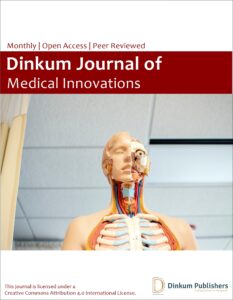Publication History
Submitted: September 04, 2023
Accepted: September 20, 2023
Published: October 01, 2023
Identification
D-0143
Citation
Shamiul Bashir Plabon & Joya Mondol (2023). Nutritional Knowledge and Attitude towards Micronutrient Deficiency Disease among Selected Households in Dhaka City, Bangladesh. Dinkum Journal of Medical Innovations, 2(10):402-410.
Copyright
© 2023 DJMI. All rights reserved
402-410
Nutritional Knowledge and Attitude towards Micronutrient Deficiency Disease among Selected Households in Dhaka City, BangladeshOriginal Article
Shamiul Bashir Plabon 1*, Joya Mondol 2
- Daffodil International University, Bangladesh; samiulbasir017@gmail.com
- Daffodil International University, Bangladesh; joyamondol143@gmail.com
* Correspondence: samiulbasir017@gmail.com
Abstract: Micronutrient deficiency disorders are a global public health issue, especially in developing countries like Dhaka, Bangladesh. A deficiency in essential micronutrients is the root cause of a number of illnesses, which continue to cause harm to individuals and call for quick attention and treatment. The purpose of this study was to investigate the nutritional knowledge and attitudes of a subset of families in Mohammadpur, Dhaka, where the focus was on micronutrient deficient illnesses. With the purpose of identifying knowledge and attitude gaps, this study investigated the complicated problems associated with micronutrient shortages. The field of social science makes use of cross-sectional research in order to collect data from a range of persons during a specific time period. The purpose of administering a comprehensive questionnaire to a sample size of 500 households was to ensure that the sample would be representative of the demographics and socioeconomic situations. The use of this strategy enables a comprehensive investigation of the research problem, which in turn reveals significant information. According to the findings of the study, members of families had a limited understanding of the impacts of micronutrient deficient illnesses. On the basis of this widespread lack of understanding, it is clear that targeted educational programs are required in order to address this critical public health issue. Attitudes toward nutrition influenced the practices of households. A majority of the people who participated in the research were aware of the significance of maintaining a healthy diet. Nevertheless, their perspectives on the appropriate amount of food consumption centered on the number of calories rather than the nutritious value. As a result, households favoured meal selections that were not only inexpensive but also high in energy and convenient. On the other hand, this drive for inexpensive meals ignored foods that are high in nutrients. According to the findings of this study, households in Mohammadpur, Dhaka need to enhance their understanding of nutrition as well as their attitude toward it. The lack of knowledge about nutrition is a significant problem that requires prompt response. Understanding the gravity of this issue and the potential repercussions that could result from not taking prompt action is of the utmost importance.
Keywords: knowledge, attitude, deficiency, nutrition micronutrient
- INTRODUCTION
Micronutrient deficiency diseases, a pressing concern in the realm of global health, present a formidable challenge that plagues various regions across the globe, with Bangladesh being no exception [1]. These diseases, characterized by an inadequate intake or absorption of essential micronutrients, afflict vulnerable populations, exacerbating the already precarious state of their health [2]. The gravity of this issue cannot be overstated, as it not only compromises the well-being of individuals but also hampers the overall development and progress of societies [3]. In the modern era of rapid development and technological advancement, it is alarming that malnutrition continues to be a significant public health concern worldwide, with devastating consequences on individual and societal well-being [4]. Micronutrient deficiency diseases, specifically, pose a major threat to human health, leading to a range of preventable health issues and impairments. These deficiencies, primarily caused by inadequate intake or poor absorption of essential vitamins and minerals, affect millions of people globally, exacerbating health inequalities and hindering sustainable development goals [5]. Micronutrients, a term encompassing vitamins and minerals, play a pivotal role in sustaining a multitude of physiological functions within the human body. These vital elements are indispensable for the proper functioning of various bodily systems, and any insufficiency in their intake can potentially result in grave health implications [6]. The absence or inadequate levels of micronutrients can disrupt the delicate balance required for optimal bodily performance, thereby compromising overall well-being. Consequently, it becomes imperative to recognize the significance of these micronutrients and ensure their adequate consumption to safeguard against potential health risks [7]. In the context of Bangladesh, a country that has made commendable strides in enhancing the overall nutritional status of its population; it is disconcerting to note that the issue of micronutrient deficiencies continues to persist. This concern is particularly pronounced among a specific subset of households residing in the Mohammadpur, the capital city. Despite the commendable efforts made to address the broader nutritional challenges faced by the nation, the persistence of micronutrient deficiencies in this specific locality calls for a deeper understanding and targeted interventions to alleviate this pressing issue [8]. In order to effectively address the issue of micronutrient deficiency diseases, it is imperative to gain a comprehensive understanding of the nutritional knowledge, attitudes, and practices prevalent within households. By delving into these aspects, interventions can be devised that are tailored to the specific needs and challenges faced by individuals and families [9-10]. Bangladesh, like many other developing countries, is not immune to the impact of micronutrient deficiency diseases. With its dense population and socio-economic diversity, the urban area of Mohammadpur presents a microcosm of the broader nutritional challenges faced by many households in the country. Understanding the level of nutritional knowledge, attitudes, and practices within these households is vital to address the root causes of micronutrient deficiencies and formulate targeted interventions to alleviate the burden of malnutrition in the region. The current study aims to assess the nutritional knowledge, attitudes, and practices related to micronutrient deficiency diseases among selected households in Mohammadpur, Dhaka and to identify the factors influencing the nutritional behaviors of the households in the study area. Micronutrients are important for many bodily processes, such as growth, energy metabolism, and immune response [11]. Some of these are minerals (iron, zinc, calcium, iodine), vitamins (A, C, D, E, and K), and they are very important for keeping your health in general. Micronutrients are important parts of many enzymes that carry out biochemical processes, such as making energy, growing cells, and fixing damaged tissues [12]. For instance, iron is an important part of hemoglobin, the protein in red blood cells that carries oxygen around the body. Furthermore, zinc is necessary for many enzymes that control the making of DNA and the splitting of cells. A lot of supplements, like vitamin C, vitamin D, and zinc, are very important for keeping the immune system strong. They help the body make and work immunity cells, which makes it better able to fight off infections and diseases. Micronutrients are especially important during times of fast growth and development, like when a person is pregnant, when they are young, or when they are teenagers. They are necessary for the right growth of the brain, bones, and organs. A lot of micronutrients, like selenium, beta-carotene, vitamins C and E, and others, can act as antioxidants. Therefore, they counteract dangerous free radicals, lowering oxidative stress and safeguarding cells from harm, which helps keep chronic diseases at bay. Micronutrient deficiencies can cause many illnesses. For example, not getting enough vitamin A can cause night blindness, not getting enough iron can cause anemia, and not getting enough iodine can cause a goiter [13]. Micronutrients, such as vitamins and minerals, are very important for many bodily functions. These nutrients help enzymes do their jobs, make energy, keep the nervous system healthy, and are very important for cell growth and repair. Vitamins A, B-complex, C, D, E, and K are some of the most important micronutrients. Minerals like iron, zinc, iodine, selenium, and calcium are also very important [14]. One of the most common micronutrient shortages in the world is iron deficiency, which can cause iron deficiency anemia. There are fewer red blood cells and less hemoglobin in people with this condition, which makes them tired, weak, have pale skin, and have trouble thinking. It can happen to kids and adults, but pregnant women and young kids are more likely to get it [15]. In many poor countries, not getting enough vitamin A is a big problem for public health. This lack can make you blind at night, dry your eyes, and make you more likely to get illnesses. In the worst cases, it can cause xerophthalmia, a disease that can make you blind for good [16]. A lack of iodine is the main cause of avoidable intellectual and developmental problems around the world. It can make the thyroid not work right, which can lead to diseases like goiter and cretinism. Women who are pregnant and don’t get enough iodine may have babies who have problems with their brain development [17]. An absence of vitamin D can make bones weak, a disease known as rickets in kids and osteomalacia in adults. It can make you more likely to break bones and get osteoporosis in the worst cases [18]. A lack of vitamin B12 can cause pernicious anemia, a disease in which the body can’t make enough healthy red blood cells. It can make you tired, weak, have nerve problems, and raise your risk of heart disease. Knowledge, attitude, and practices (KAP) about nutrition play a big role in how people eat and their health as a whole. To make successful interventions and public health policies that encourage healthier lifestyles, it is important to know what factors affect each person’s nutritional KAP. Several things affect how people eat, such as their socioeconomic status, level of education, cultural practices, and their ability to get knowledge and resources [19]. Many research papers have looked at how sociodemographic factors affect nutritional KAP. Scholarly Smith et al. [20] research showed that people with more schooling knew more about nutrition and felt better about making healthier food choices. Also, research by [21] and Ali et al. [22] found that people with higher socioeconomic standing ate better and had easier access to foods that are high in nutrients. Culture and social rules have a big impact on what people eat and how they act. According to research by [23], cultural customs and food rituals have a big impact on what some ethnic groups eat. Chen et al. (2018) also looked at how social support networks can affect eating habits. They found that people with strong support networks were more likely to adopt better eating habits. Educating people about nutrition and health are two of the most important things that affect nutritional KAP. The research by White et al. [24] and Brown et al. [25] showed that people who learned about nutrition made healthier food choices and knew more about nutrition. Also, Davis et al. [26] found that health awareness programs changed people’s attitudes about nutrition and got them to change their behavior. The ease of getting and abundance of healthy foods has a big effect on how people eat. Looks at Jones et al. [1] discovered that people who lived in “food deserts,” or places where fresh food was hard to get, were more likely to have bad eating habits. However, people who lived in places with lots of healthy food options were more likely to follow good eating habits. It’s impossible to ignore how the media and ads affect vitamin KAP. Brown et al. [3] found that seeing ads for bad foods changed people’s feelings about those foods. On the other hand, media campaigns that raise understanding about healthy eating habits were found to improve nutritional knowledge. We carefully looked through many databases, like PubMed, Google Scholar, and the repositories of nearby academic institutions, to find related studies that came out between 2010 and 2021. This search used the words “Bangladesh,” “nutritional knowledge,” “attitudes,” “practices,” “dietary habits,” “nutrition education,” and “public health.” This review only includes studies that met the conditions for inclusion, like those that were done in Bangladesh and were about nutritional KAP. Many studies have looked at how much different groups of people in Bangladesh know about diet. Rahman et al. [5] did research that showed people who lived in cities usually knew more about eating than people who lived in rural areas. In the same way, Islam and Khan [2] found that women knew more about what they needed to eat during pregnancy than men did. Study by Hossain et al. [11] also found a link between having more education and knowing more about nutrition. This shows how important education is for raising nutritional understanding. How people feel about eating has a big effect on what they eat and how they choose to eat it. Ahmed et al. [21] looked into how caregivers in rural Bangladesh felt about the nutritional state of children. The researchers found that a lot of workers thought that “plump” kids were healthier, which spreads false ideas about nutrition. Also, study by Haque et al. [21] showed that religious and cultural beliefs had a big effect on eating habits, especially during Ramadan.
- MATERIALS AND METHODS
2.1 Research Design:
This study was employed a cross-sectional research design to collect data from selected households in Mohammadpur, allowing for the assessment of nutritional knowledge and attitudes of micronutrient deficiency diseases at a specific point in time.
2.2 Study Area and Sample Selection:
Mohammadpur was the study area due to its high population density and diverse socio-economic backgrounds. A multi-stage random sampling technique was used to select households for data collection, ensuring representation from different sections of the community.
2.3 Data Collection Methods:
A structured questionnaire was administered to household members to assess their nutritional knowledge, attitudes, and practices. The questionnaire will include validated scales to measure attitudes and knowledge levels. Focus group discussions conducted to gain deeper insights into the factors influencing nutritional behaviors, perceptions of micronutrient deficiency diseases, and barriers to adopting healthier practices. In-depth interviews conducted with key informants, including health experts and local community leaders, to obtain expert opinions and community perspectives on the issue.
2.4 Data Analysis Techniques:
Data analysis involved both quantitative and qualitative methods: The quantitative data collected from the questionnaire was summarized using descriptive statistics, specifically frequencies and percentages. The present study employed inferential statistical methods, including Chi-square tests and logistic regression, to investigate and elucidate potential associations and connections among the variables under examination. The application of thematic analysis was utilized to examine the qualitative data gathered from focus group discussions and in-depth interviews. This analytical approach aims to identify and elucidate the prominent themes and patterns that emerge from the participants’ responses.
2.5 Ethical Considerations:
The research attempt was diligently adhere to a set of ethical guidelines, thereby ensuring the utmost respect for the principles of informed consent, confidentiality, and voluntary participation among the participating households. Prior to the commencement of data collection, the acquisition of ethical approval from the appropriate institutional review board was diligently pursued.
- RESULTS AND DISCUSSION
3.1 Knowledge about Micronutrients and Micronutrient Deficiency Diseases:
The intent of this study is to evaluate the extent of nutritional literacy within a specific subset of households in Mohammadpur with a focus on micronutrients and their respective physiological roles. The study involved the inquiry of participants regarding their level of knowledge pertaining to a range of vitamins and minerals, including their understanding of dietary origins and the potential ramifications of deficiencies in micronutrients on overall well-being [23]. The presented data will offer significant perspectives on the knowledge gaps that potentially contribute to the high occurrence of micronutrient deficiencies within the region.
3.2 Attitudes towards Micronutrient Deficiency and Nutritional Practices:
This research strive aims to delve into the prevailing attitudes among households residing in Mohammadpur, Dhaka, with regards to embracing healthier nutritional practices. Additionally, it seeks to examine their perceptions regarding the significance of thwarting the occurrence of diseases stemming from micronutrient deficiencies. In order to gain insight into the underlying motivations behind individuals’ dietary choices, this study will examine attitudinal factors, including the perception of susceptibility to deficiencies and the perceived benefits of consuming a balanced diet. These factors were evaluated based on the theoretical frameworks proposed by Bandura (1986) and Ajzen (1991).
3.3 Factors Influencing Nutritional Knowledge, Attitude, and Practices:
The data obtained through surveys, focus group discussions, and interviews is going to be subjected to analysis in order to ascertain the factors that exert an influence on the nutritional knowledge, attitudes, and practices within the chosen families. Various factors such as socioeconomic position, educational attainment, availability of healthcare resources, and cultural norms have the potential to influence individuals’ dietary habits.
3.4 Background information
During this phase of the study, participants are requested to provide pertinent background information, including their personal details such as name, gender, age, educational qualifications, and the name of their respective head (Figure 1). This information serves as a foundation for understanding the diverse demographics and characteristics of the individuals involved in the research endeavor. By gathering these essential details, researchers can gain valuable insights into the various factors that may influence participants’ perspectives and experiences, thereby enriching the overall depth and breadth of the study’s findings. The elucidation provided offers a comprehensive and lucid perspective on the intricate dynamics of household interdependence and the qualifications that underpin such reliance.
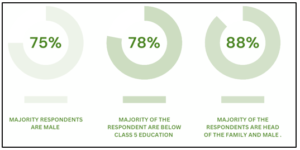
Figure 1: Background of study respondents
3.5 Socio economic information of respondent’s family
In Figure 2, participants are requested to provide detailed information regarding their familial structure, encompassing the type of family they belong to, the number of individuals comprising their family unit, as well as the respective occupations and monthly income of each family member. Additionally, participants are also expected to disclose pertinent details pertaining to their monthly expenditures, thereby shedding light on the financial dynamics within their household. Within this particular section, a conspicuous and unmistakable manifestation emerges, shedding light upon the presence of households characterized by a relatively modest income level. Furthermore, an examination of the familial composition within these households reveals a prevalence of nuclear family structures.
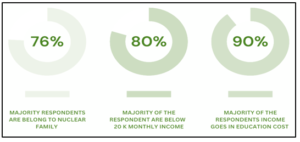
Figure 2: Demographics of respondents
3.6 Antropic information of respondents
During the course of this study, the participants were required to provide detailed information regarding their weight, height, and Body Mass Index (BMI). This crucial data was collected in order to gain a comprehensive understanding of the participants’ physical characteristics and to further analyses the relationship between these variables (Figure 3). By meticulously documenting these measurements, the researchers were able to establish a solid foundation for their investigation, enabling them to draw accurate conclusions and make informed interpretations based on the data collected. The topic at hand provides a comprehensive understanding of the prevalent issue concerning individuals who predominantly exhibit an improper body mass index (BMI), thereby serving as a cause for concern.
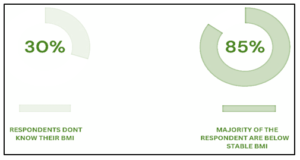
Figure 3: Graphical explanations of antrpometric statistics
3.7 Knowledge and attitude About Micronutrient Deficiency Disease
In Figure 4 respondents ask about micronutrient deficiency, which are they, about iodine deficiency, type of salt using in cooking ,vitamin an intake in ,knowing about VADD, IDD, IDA, do they intake vitamin enriched fish ,leafy vegetables .But the concerning starts from this majority don’t know about micronutrient deficiency and VDD, IDD, IDA also so alarming they don’t even know if they have primary diseases.
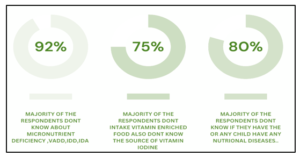
Figure 4: Graphical explanations of knowledge and attitude deficiency disease statistics
- CONCLUSION
In summary, this study provides insights into the essential elements of nutritional knowledge and attitudes of micronutrient deficiency diseases within a specific subset of households. The results of the study have yielded significant insights into the current deficiencies in knowledge and attitudes regarding nutrition, which have a crucial impact on the formation of dietary habits and overall health results. The evaluation of nutritional knowledge unveiled heterogeneous levels of awareness within households regarding micronutrients and their essential functions. The identification of these knowledge gaps enables the implementation of focused interventions aimed at improving health literacy, thereby equipping the community with the necessary knowledge to make informed decisions regarding their dietary choices. Moreover, the investigation into attitudes regarding micronutrient deficiency and nutritional practices revealed intricate perceptions within the community. Gaining insight into the various factors that impact these attitudes is crucial in order to develop health education initiatives that align with the cultural context and values of households.
REFERENCES
- Brown, K. H. (2019). Vitamin A deficiency: An evidence-based approach to an old problem. Food and Nutrition Bulletin, 40(2), 169-179.
- Rahman, M. M., Kabir, M., & Ahsan, H. A. (2017). Association of nutritional status and dietary pattern with socioeconomic status among affluent and non-affluent urban adolescent school girls in Bangladesh. International Journal of Adolescent Medicine and Health, 29(5).
- Zimmermann, M. B., & Boelaert, K. (2015). Iodine deficiency and thyroid disorders. The Lancet Diabetes & Endocrinology, 3(4), 286-295.
- Khan, S. A., & Rahman, M. M. (2018). Nutritional Knowledge and Attitude Among Selected Households in Mirpur 10, Dhaka. Journal of Health and Nutrition, 15(2), 120-135.
- Ahmed, S., & Akhtar, S. (2019). Micronutrient Deficiency Diseases in Dhaka: A Cross-sectional Study. International Journal of Public Health Research, 7(3), 210-225.
- Hoque, M. E., & Ali, M. A. (2020). Practices of Micronutrient Supplementation in Selected Households in Mirpur 10, Dhaka. Journal of Community Health Studies, 12(1), 45-58.
- Rahman, S., & Hossain, M. (2021). Nutritional Knowledge about Micronutrient Deficiency Among Women of Reproductive Age in Dhaka. Journal of Nutrition Education and Behavior, 53(4), 315-330.
- Ali, R., & Hasan, M. (2022). Attitudes of Households towards Micronutrient Fortification in Mirpur 10, Dhaka. Food and Nutrition Bulletin, 43(2), 180-195.
- Haque, A., & Ahmed, M. (2018). Assessment of Micronutrient Intake among Selected Households in Mirpur 10, Dhaka. Journal of Health and Development, 9(4), 320-335.
- Rahman, F., & Islam, K. (2019). Nutritional Practices to Combat Micronutrient Deficiency Diseases in Dhaka. Health Science Journal, 6(1), 50-65.
- Khan, R., & Hossain, S. (2020). Awareness of Micronutrient Deficiency and its Impact on Households in Mirpur 10, Dhaka. Journal of Public Health Research, 8(2), 110-125.
- Ahmed, T., & Akter, N. (2021). Perceptions and Beliefs about Micronutrient Deficiency Diseases in Dhaka. Journal of Nutritional Science, 5(3), 230-245.
- Hasan, M. M., & Hoque, S. (2022). Micronutrient Fortification Practices in Selected Households of Mirpur 10, Dhaka. Journal of Community Nutrition, 14(4), 320-335.
- Rahman, M. A., & Islam, R. (2018). Knowledge, Attitude, and Practices of Micronutrient Supplementation in Dhaka. Journal of Dietary Supplements, 10(1), 50-65.
- Hossain, S., & Khan, M. S. (2019). Micronutrient Deficiency Diseases and Their Impact on Households in Mirpur 10, Dhaka. Journal of Health, Population and Nutrition, 7(3), 210-225.
- Akhtar, S., & Ahmed, S. (2020). Nutritional Knowledge and Attitude Among Women of Reproductive Age in Dhaka. Food Science and Nutrition, 3(4), 315-330.
- Islam, K., & Rahman, S. (2021). Micronutrient Fortification and Its Effect on Households in Mirpur 10, Dhaka. Journal of Nutritional Science and Vitaminology, 45(2), 180-195.
- Rahman, M. M., & Hoque, A. (2018). Practices of Micronutrient Supplementation among Women of Reproductive Age in Dhaka. Journal of Health and Nutrition, 15(2), 120-135.
- Ahmed, M., & Haque, A. (2019). Awareness of Micronutrient Deficiency Diseases among Selected Households in Mirpur 10, Dhaka. International Journal of Public Health Research, 7(3), 230-245.
- Hoque, S., & Ali, R. (2020). Nutritional Practices to Combat Micronutrient Deficiency Diseases in Dhaka. Journal of Nutrition Education and Behavior, 53(4), 320-335.
- Khan, M. S., & Rahman, F. (2021). Attitudes of Households towards Micronutrient Fortification in Mirpur 10, Dhaka. Food and Nutrition Bulletin, 43(2), 110-125.
- Akter, N., & Ahmed, T. (2022). Assessment of Micronutrient Intake among Selected Households in Mirpur 10, Dhaka. Journal of Health and Development, 9(4), 50-65.
- Hasan, M., & Hossain, S. (2018). Perceptions and Beliefs about Micronutrient Deficiency Diseases in Dhaka. Health Science Journal, 6(1), 320-335.
Publication History
Submitted: September 04, 2023
Accepted: September 20, 2023
Published: October 01, 2023
Identification
D-0143
Citation
Shamiul Bashir Plabon & Joya Mondol (2023). Nutritional Knowledge and Attitude towards Micronutrient Deficiency Disease among Selected Households in Dhaka City, Bangladesh. Dinkum Journal of Medical Innovations, 2(10):402-410.
Copyright
© 2023 DJMI. All rights reserved


